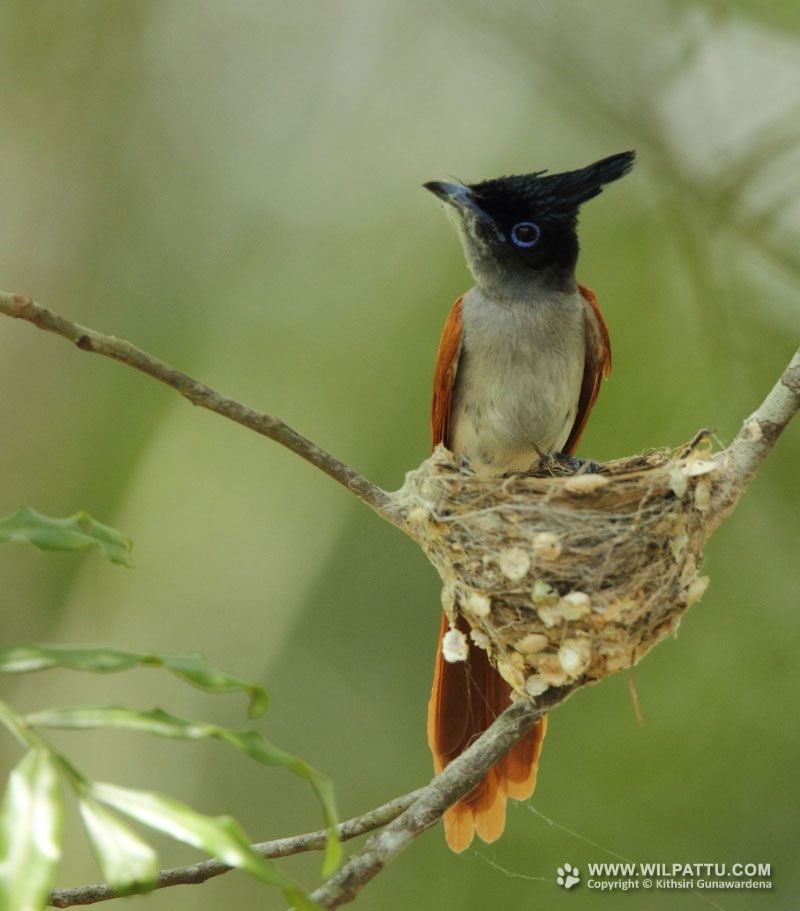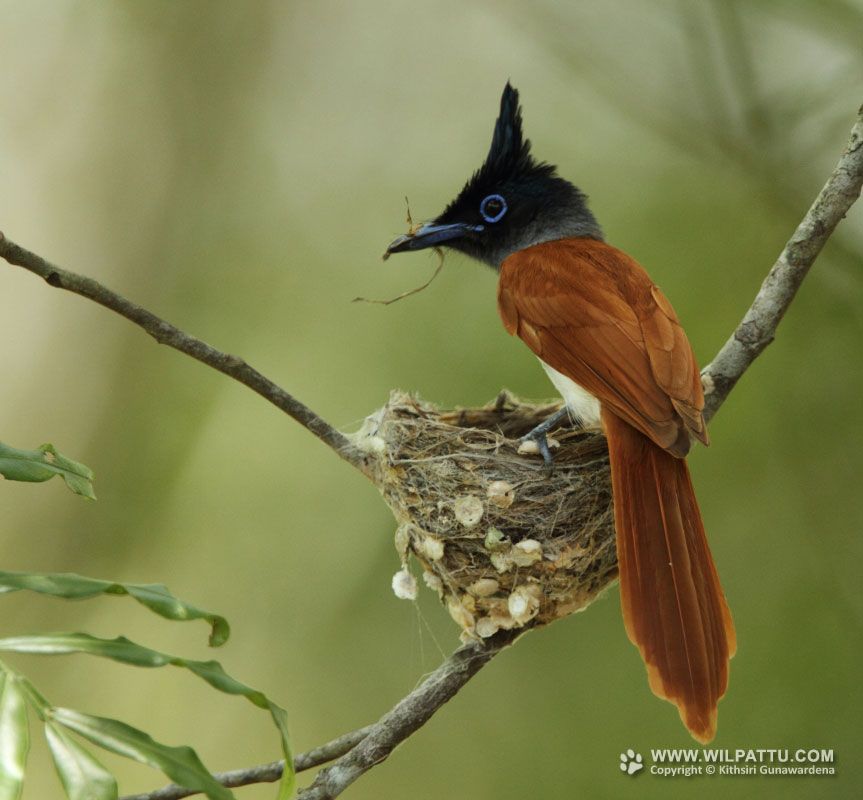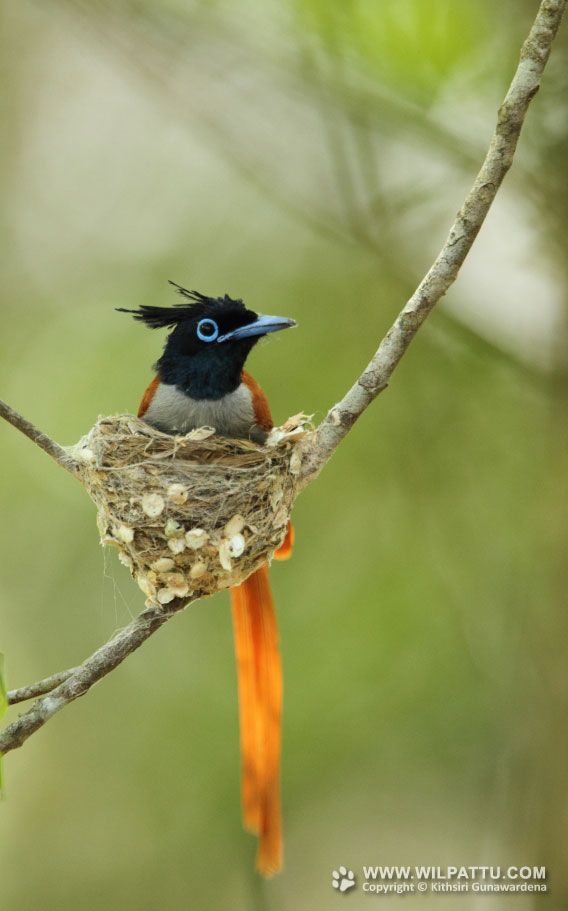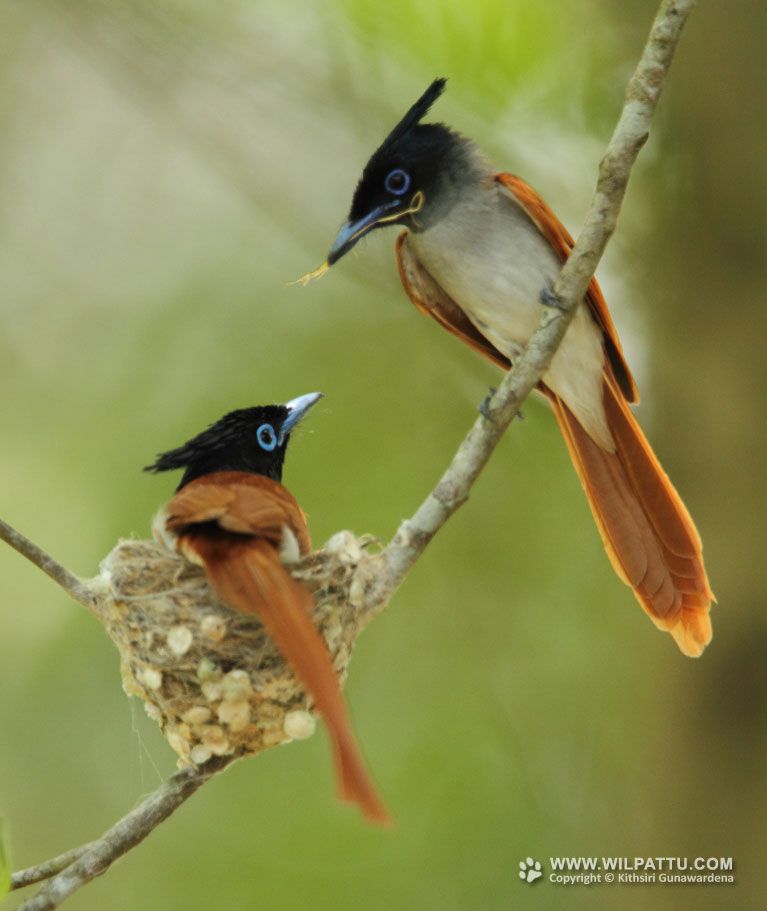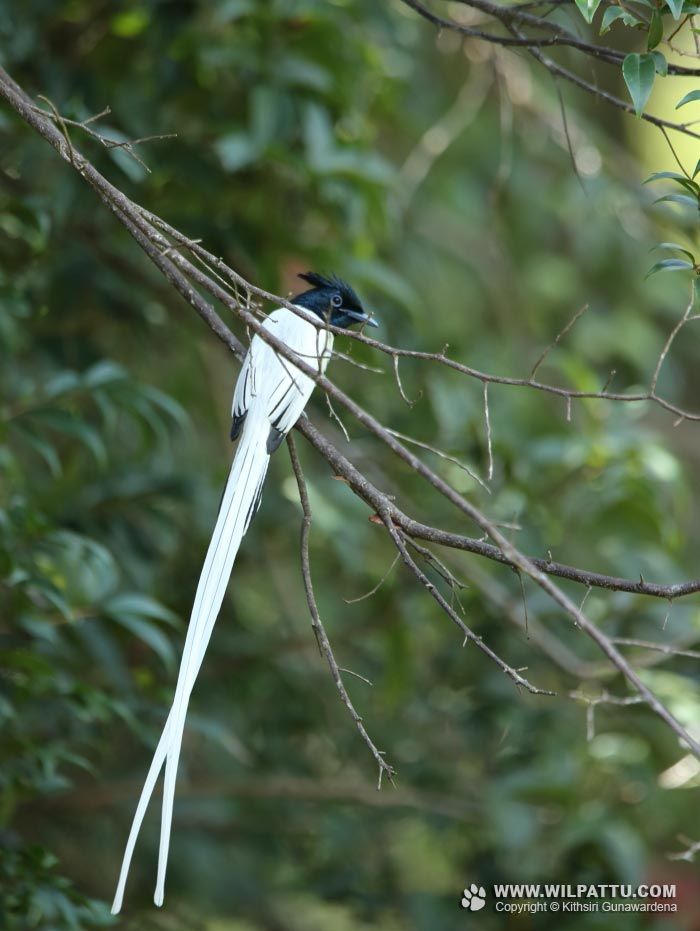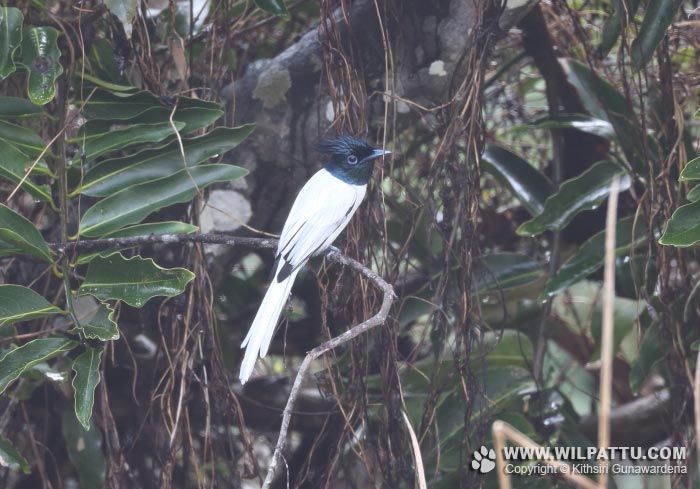
Birds ‹‹ Go Back
These magnificent birds are found from Turkestan to Manchuria, India, Sri Lanka and the Malay Archipelago.
Fourteen subspecies have been recognized across its range. The subspecies that is found in Sri Lanka, T. p. ceylonensis is a breeding resident and is found in the dry lowlands and lower hills. The Indian Paradise Flycatcher T. p. paradise migrates from India and can be found throughout the country during the migrant season.
The adult males of both races have a black head and a throat and carry long ribbon like tail feathers. The males of the Indian race which are less than three years of age are chestnut in colour and have short tails like the females and a pale throat. At this stage these young birds look very similar to the males of the same age of the resident race but can be differentiated with their darker grey chest and longer crest than the males of the resident race. These young birds of the Indian race will go through a complete moult (shedding of feathers and acquiring new feathers) and acquire their silvery white plumage with ribbon like tails between 3 to 4 years of their lives. Mature Indian males are mostly white, but a few individuals possess some amount of both chestnut and white throughout their lives. Some such bi coloured males seen during the migrant season with a few white feathers and partially developed tails are young males belonging to the Indian race in transition to where the process moulting has started. There is no records of such birds completing their moult while they are in the island. Thus, during the migrant season the male Indian Paradise flycatchers occur in chestnut (less than three years young males), white or as bicoloured birds. The resident males are always chestnut in colour but has shorter streamers and a longer crest compared to the Indian males. The females of both races carry a short tail and are always chestnut in colour with a grey throat.
The conservation status of this species is regarded as “Least Concerned” (National Red List 2012).
This is a species protected under the Fauna and Flora Protection Ordinance as amended by Act No. 22 of 2009.
I have observed the migrant species throughout the island and observed the nesting of the resident race at many locations in the low country dry zone. This is a common bird and still can be seen during the migrant season even in the well-wooded gardens of Colombo.
Breeding pairs build a very neat cup shaped nest lined with cobwebs. I have observed nest building at many localities in the dry zone including Wilpattu. Both the male and female share the labour of building a home for their young. Before retiring for the night these birds will invariably gather at a water hole or a nearby stream for a bath. The birds will fly over the water a few occasions before deciding to plunge in to the same in typical flycatcher fashion. It is a beautiful sight to observe the male with their long tail streamers plunging in and out of water.
It is a common species at Wilpattu. Both races can be observed during the migrant season throughout the park.

